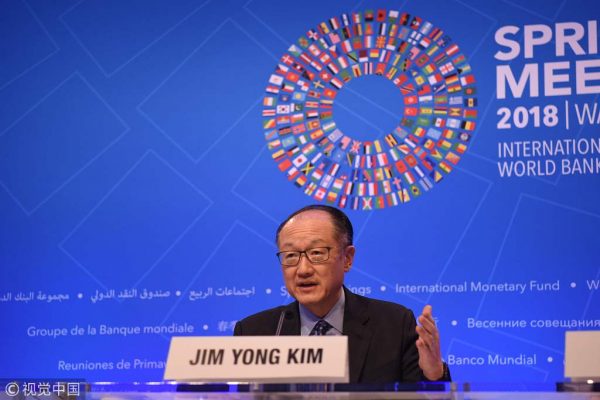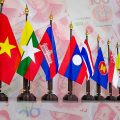
World Bank Chief Jim Yong Kim said on Thursday that he expected the progress and innovation in improving financial access across China will also happen in other countries, so that financial services become universally accessible.
Nearly one-third of the world’s adult population still doesn’t have access to financial services, according to the World Bank’s Global Findex data, which tracks how people use financial services and was released on Thursday.
“China has made great progress, but if you reflect back, the Global Findex showed that we went from the low 60s to about 69 percent of people in the world covered in terms of financial access,” Kim said, referring to the finding that 69 percent of adults around the world, or 3.8 billion people, have an account at a bank or mobile money provider, up from 62 percent in 2014.
“So we’re looking at the innovations in China and we’re trying to ensure that we get from around 70 percent to 100 percent,” he told a news conference during the spring meetings of the IMF and World Bank in Washington. In China, 80 percent of people older than 15 have such accounts, and 57 percent of the account owners are using mobile phones or the internet to make purchases or pay bills – roughly twice the share in 2014, according to the Global Findex.
Kim called for ramped-up efforts to help realize the World Bank’s goal of achieving universal financial access by 2020.
He said the World Bank has been studying the way that China has approached financial inclusion and has actually participated with China in the past on projects such as creating special branches of banks specifically for women.
In the private sector, groups such as Alibaba and Tencent have dramatically increased access to capital, markets, even in some cases access to marketing accounting, Kim said, adding that these are the kinds of things small and medium-sized enterprises need to export their products overseas.
Kim noted that there is still a large gender gap in financial inclusion worldwide. According to the Global Findex, 72 percent of men and 65 percent of women have an account, a gap of 7 percentage points.
In China, 84 percent of men older than 15 are account owners, compared with 76 percent of females, a gap of 8 points.
“So we are watching carefully,” Kim said. “China is improving financial access very quickly – not only access to financial services, but access to capital, access to markets. We need that to happen in every country in the world.”
In the case of Alibaba in China, Kim said it has made access to capital almost instantaneous, so long as the user has a good record online.
“So that’s a way of using innovation in an inclusive way,” he said, “because they’re focused on small and medium enterprises. If we can make that happen in other parts of the world, that’d be great.”


